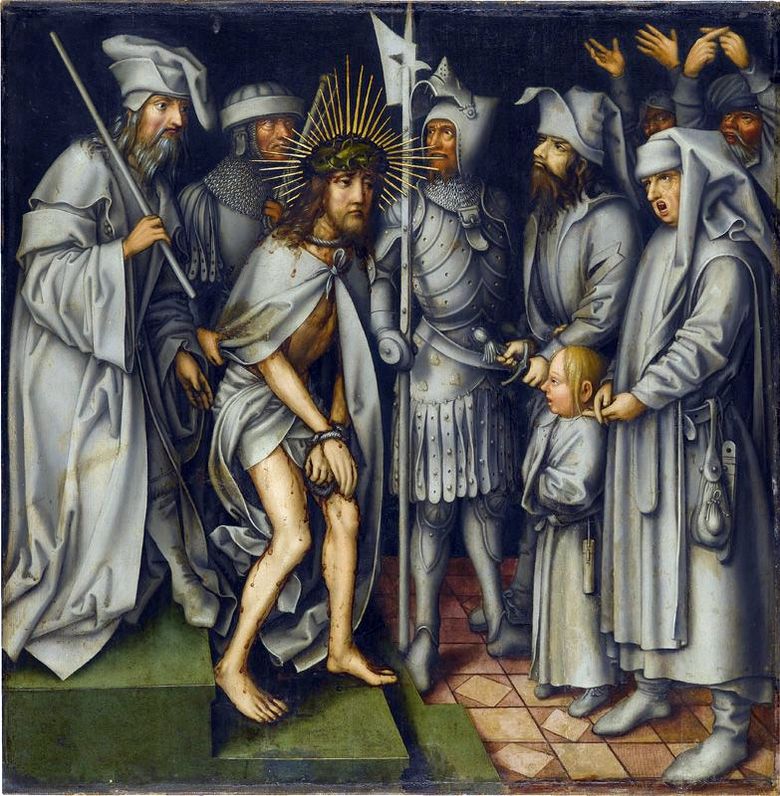
“The Passion of the Lord in gray tones” are considered one of the main creations of Hans Holbein the Elder. The cycle was named after the gray monochrome color scheme, made in the grisaille technique, imitating a sculpture. These are 12 paintings about the last episodes of Christ’s earthly life.
The court of Caiaphas and the Sanhedrin became one of the subjects of the Passion Cycle in the first centuries of Christianity. The Sanhedrin can be represented either by three priests, or Caiaphas and Annoy, or by one Caiaphas. Hans Holbein the Elder depicts Christ exhausted after beatings and mockeries. Behind him stands a man with a stick raised for a blow and looks with hatred at Jesus.
The purpose of this trial of Christ is to find the legal basis for his condemnation to death after an unsuccessful attempt to find witnesses to the “blasphemy” of Christ. Here, Judas Iscariot’s testimony would be best for them, but he, repentant of betrayal, disappeared and could not be found.
Christ stands barefoot in front of Caiaphas, surrounded by guards. He is with cross-criss-crossed hands, guards with crossed stakes and sticks, with the help of which Jesus was put on a crown of thorns. This is an allusion to the cross of the Crucifixion.
Caiaphas is always depicted on the right side of the picturesque space of this story – in accordance with the accepted symbolic meaning of the right and left sides in religious Christian paintings.
 The situation in the coffin by Hans Holbein
The situation in the coffin by Hans Holbein The Scourging of Christ by Hans Holbein
The Scourging of Christ by Hans Holbein The Murder of Christ by Hans Holbein
The Murder of Christ by Hans Holbein Christ before Pilate by Hans Holbein
Christ before Pilate by Hans Holbein Kiss of Judas by Paula Moderzon-Becker
Kiss of Judas by Paula Moderzon-Becker Prayer for the Cup by Hans Holbein
Prayer for the Cup by Hans Holbein Le Christ devant Caïphe – Hans Holbein
Le Christ devant Caïphe – Hans Holbein Self-Portrait by Hans Holbein
Self-Portrait by Hans Holbein